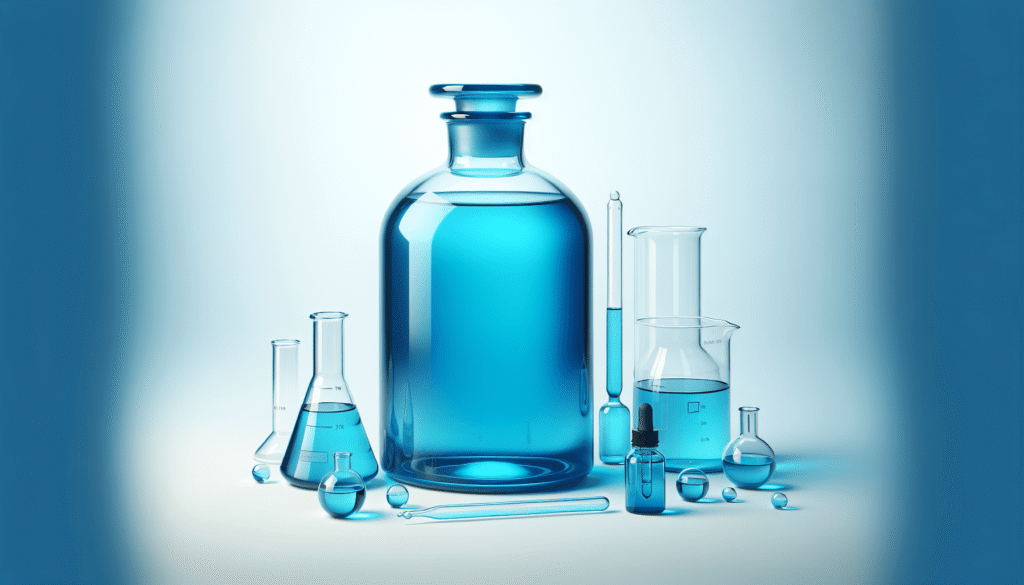
Isn’t it fascinating how science continues to reveal new insights into compounds we’ve known for years? Methylene Blue is one such compound that has garnered attention for its various applications. Before discussing whether it is safe for daily use, it’s useful to consider what Methylene Blue is and why it is often recommended.

What is Methylene Blue?
Methylene Blue is a synthetic dye that has been used for over a century in medical and scientific applications. Originally developed as a textile dye in the late 19th century, it transitioned to use in biology and medicine due to its unique properties. This compound has proven to be effective in treating a range of health conditions, from infections to neurodegenerative disorders.
Historical Context
The journey of Methylene Blue began in the 1870s, with its initial applications in identifying certain biological structures and as a stain in histology. Over the years, Methylene Blue became part of the therapeutic landscape, used primarily for its anti-malarial properties.
Mechanism of Action
Understanding how Methylene Blue works provides insight into its potential benefits and risks. This compound acts as an electron donor, facilitating various biochemical reactions. It has antioxidant properties which help in neutralizing free radicals, thereby potentially reducing oxidative stress in cells.
Uses of Methylene Blue
Methylene Blue is versatile in its applications. Each use highlights its unique qualities and potential benefits.
Medical Applications
-
Antimicrobial Agent: Methylene Blue has shown effectiveness against certain bacteria and fungi. As an antimicrobial agent, it has been utilized in treating infections, particularly urinary tract infections.
-
Antidote for Poisoning: The compound is used as an antidote for certain types of poisoning, such as cyanide poisoning. It aids in restoring normal cellular respiration.
-
Neuroprotective Effects: Research suggests Methylene Blue may have neuroprotective properties, offering potential benefits for those suffering from neurodegenerative diseases like Alzheimer’s and Parkinson’s.
-
Methemoglobinemia Treatment: It is prescribed as a treatment for methemoglobinemia, a condition where hemoglobin cannot effectively release oxygen to body tissues. Methylene Blue helps restore the normal function of hemoglobin.
Research and Studies
Numerous studies have explored the efficacy of Methylene Blue in various fields. Recent research has focused on its potential role in enhancing cognitive function and memory. Some studies demonstrate positive cognitive effects in animal models, indicating promise for human applications.
Daily Use Considerations
While the potential benefits of Methylene Blue are intriguing, you may wonder if it is safe for daily use. This consideration warrants a closer examination of its safety profile.
Potential Side Effects
As with all compounds, the use of Methylene Blue can lead to side effects, especially when used improperly. Some reported side effects include:
-
Skin Discoloration: One of the most noticeable effects of Methylene Blue is its tendency to stain skin, urine, and other bodily fluids.
-
Gastrointestinal Issues: Some individuals may experience nausea, vomiting, or diarrhea.
-
Headaches: A common complaint is the occurrence of headaches following administration.
Contraindications and Interactions
Before considering Methylene Blue for daily use, it is critical to understand its contraindications. Certain individuals should avoid it, particularly:
-
Those with G6PD Deficiency: People with glucose-6-phosphate dehydrogenase deficiency are at risk for hemolytic anemia when exposed to Methylene Blue.
-
Serotonin Syndrome Risk: Methylene Blue can interact with specific antidepressants (such as SSRIs), leading to an increased risk of serotonin syndrome, a potentially life-threatening condition.
Recommended Dosage
If you are contemplating the use of Methylene Blue, understanding the appropriate dosage is crucial. While therapeutic dosages may vary, general guidelines suggest:
| Condition | Dosage |
|---|---|
| Antimicrobial Use | 50–200 mg daily |
| Neuroprotective Effects | 10–50 mg daily |
| Methemoglobinemia | 1–2 mg/kg (IV administration) |
Always consult with a healthcare professional to determine the appropriate dosage for your specific needs and to ensure monitoring of potential side effects.
Conclusion: Is Methylene Blue Safe for Daily Use?
Your consideration of Methylene Blue for daily use should be approached with caution. While it offers a range of potential benefits, awareness of its side effects, contraindications, and interactions is paramount. The key to its safe use lies in proper dosing and medical supervision.
Personalized Considerations
Before starting Methylene Blue or any new supplement, it is vital to evaluate whether it aligns with your health goals. Personalization in healthcare is increasingly recognized as essential in ensuring efficacy and safety.
Final Thoughts
In conclusion, Methylene Blue is a compound of considerable interest, with applications spanning from infection treatment to potential cognitive enhancement. However, its safety for daily use is contingent upon individualized assessments and professional guidance. The delicate balance of maximizing benefits while minimizing risks is vital to your health journey.
In the world of health and wellness, knowledge is power. By staying informed and consulting with healthcare professionals, you empower yourself to make decisions that align with your unique health needs.
